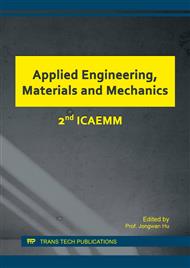p.109
p.114
p.119
p.125
p.130
p.143
p.149
p.155
p.160
Numerical Simulation of Precast Pile Caps Reinforced Concrete
Abstract:
This paper investigates the structural behavior of pile caps designed in precast concrete. Firstly, it is performed an introduction to the subject, indicating the advantages and disadvantages of using this element as structural solution. Secondly, some aspects related to its application in Brazil and abroad are discussed as well and finally, considerations are presented regarding the research in this area, followed by numerical analysis of two pile caps studied by Chan & Poh [3], using finite element method by Diana V 9.2 software. A load versus displacement response of a specimen is presented as the cracking panorama and nodal stress in the pile and the column. Comparison of ultimate load between experimental and numerical simulation shows that numerical model is able to represent the structural behavior.
Info:
Periodical:
Pages:
130-140
Citation:
Online since:
October 2017
Keywords:
Price:
Сopyright:
© 2017 Trans Tech Publications Ltd. All Rights Reserved
Share:
Citation:


